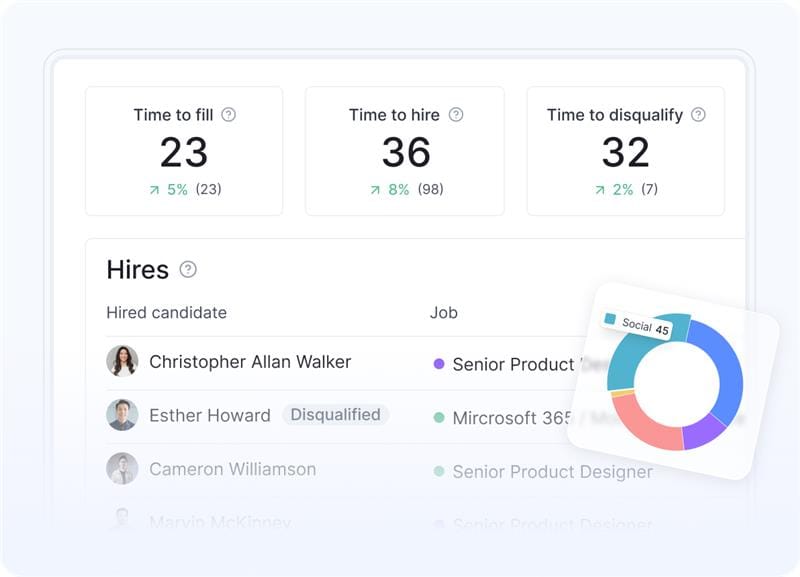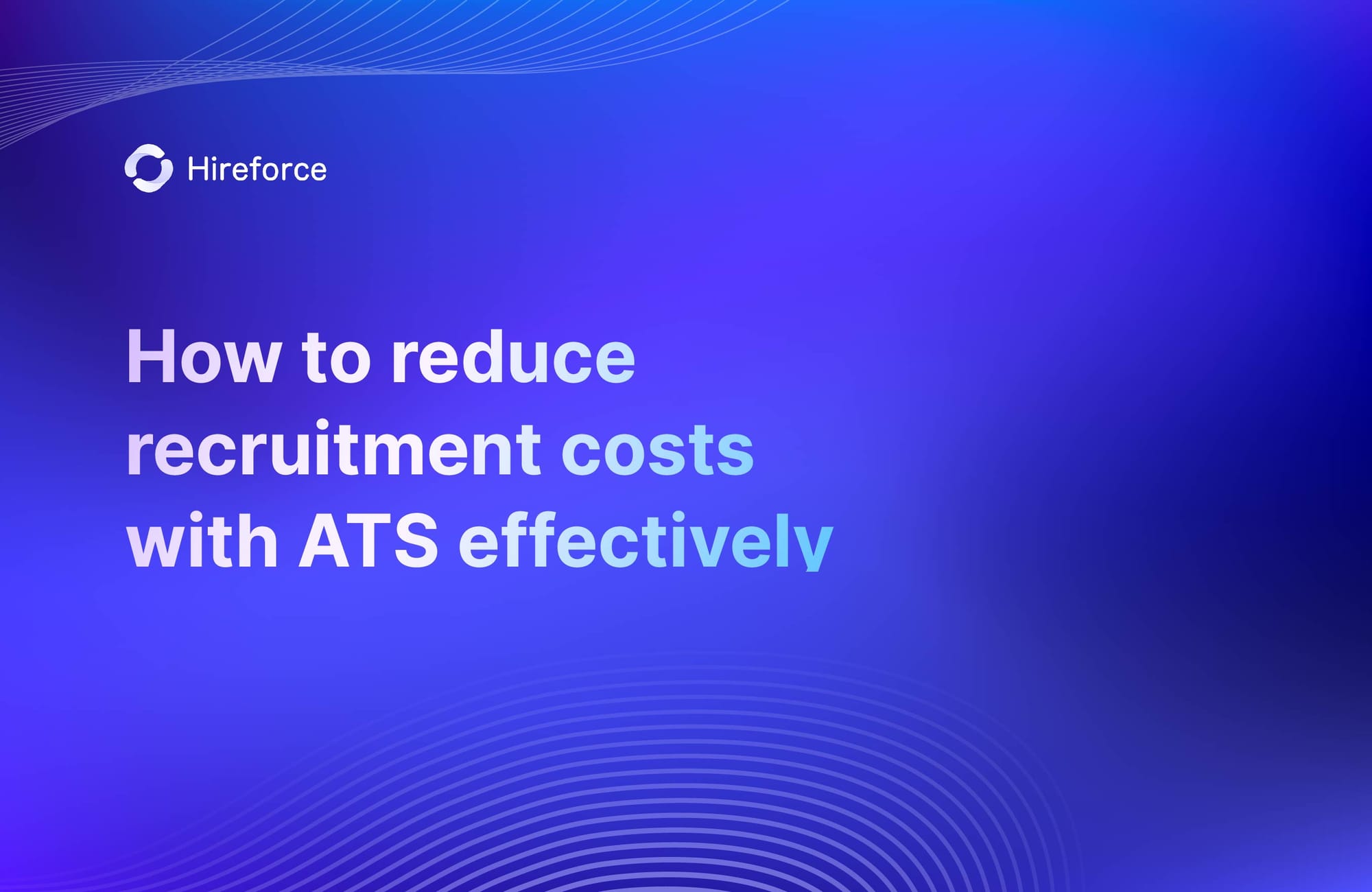Recruiting for startups and SMEs is tough. With limited resources, growing demands, and a rapidly changing landscape, recruiters face numerous challenges that impact their ability to find the right talent. Unlike large corporations, small businesses often lack big HR teams or budgets to invest in advanced tools. Instead, they rely on agility and resourcefulness to find the best candidates. In this blog, we'll explore the most pressing challenges faced by recruiters today.
1. Not Enough Time
For many recruiters in startups and SMEs, time is the biggest challenge. Recruiters handle many different tasks and responsibilities in their roles, both in strategy and execution. This means they are responsible for building the culture and talent strategy and directly sourcing candidates, screening, scheduling interviews, and managing communication with stakeholders while ensuring that data columns are filled.
Administrative tasks such as screening resumes and scheduling interviews take up a significant amount of time. Imagine how tired a recruiter would be if he/she had to scan 100 or 200 resumes for a shortlist and have to do it over and over again, especially if he/she has to handle many different open jobs.

Another part is that the current labor market is shifting to a candidate market, which means that candidates demand more and want a better experience when interacting with the business interview process. Therefore, if the business does not have a strong positioning and a fast, professional recruitment process, it will lead to missing out on talent.
2. Hiring is a Collaborative Process
Recruitment is inherently collaborative, involving recruiters, hiring managers, department heads, and even company founders. Everyone must work together effectively to make the right hiring decisions, especially in startups and SMEs where each hire is critical.
Recruiters spend significant time talking to hiring managers to discuss interview expectations, gather feedback, and align on requirements. They also need to keep candidates informed. This level of communication can consume an entire day, leaving little time for other tasks. Overload can negatively impact the recruitment process as a whole and internal communication of the organization, such as work delays, miscommunication between teams, and, worse, making wrong hiring decisions that will cost the business a lot of money.

3. Information Overload in the Digital Age
Another challenge modern recruiters face is the overwhelming amount of information available today. Technology and social media have transformed how recruiters process their work and source talent, but they have also added layers of complexity. The sheer volume of information that needs to be processed in just one opening job could blow your head. Imagine 100 CVs from LinkedIn just appearing on your spreadsheet, and you need to post more on 10 different job boards just so the hiring manager feels diverse enough to choose.
Data is not just about numbers and candidate information that is stored and organized; it is also about hidden information that sometimes needs to be looked at more deeply. This may not be immediate, but sometimes, this data will provide businesses with valuable insights. For example, effective recruitment channels, time to hire for a position, and potential loopholes in the recruitment process that companies can exploit to work more effectively, faster, and save significant costs.

4. Tight Budget and How to Cut Costs
Most startups and SMEs operate with limited capital and small teams, often relying on manual processes and free tools to get the job done. Recruiting is especially difficult, requiring efficiency despite limited resources.
A familiar mistake startup owners make is using free or traditional tools. Some of the most well-known tools are spreadsheets, Notion, and Google Mail. These tools may be good when the amount of work is small, but when things scale up, not having a centralized tool to manage and standardize the process will create a considerable burden and reduce the efficiency of HR staff. The underlying cost may not be immediately visible but will affect the business's already tight budget.

In addition, the lack of a centralized recruitment management tool will also easily lead to wrong hiring decisions. According to U.S. Department of Labor statistics, the monetary cost can vary up to 30 percent of the employee’s first-year earnings. That only considers the surface cost; other costs can be mentioned, such as the negative impact on the business's performance and morale.

Addressing the Challenges with an ATS Solution
Addressing these recruitment challenges requires the right strategy and tools. Hireforce Applicant Tracking System can provide the efficiency and structure needed to overcome these obstacles.
- Automate Time-Consuming Tasks: An ATS helps recruiters automate repetitive tasks, including resume screening, automatic email responses, and interview scheduling. This saves significant time and allows recruiters to focus on more impactful activities, directly addressing the challenge of insufficient time.
- Facilitate Collaboration: Recruitment is a team effort, and an ATS provides a centralized platform for all stakeholders to stay informed, share feedback, and track progress. Hiring managers and recruiters can collaborate effectively by streamlining communication and automating reminders, leading to better outcomes.
- Manage Information Overload: An ATS consolidates all candidate data in one place, making it easier to stay organized and prioritize effectively. By providing data-driven insights and customizable filters, recruiters can quickly identify the most suitable candidates without getting bogged down by irrelevant information.
- Accelerate the Hiring Process: Speed is essential in recruitment, and an ATS ensures candidates move through the hiring pipeline efficiently. Automating resume screening, interview scheduling, and follow-up communications helps accelerate the hiring process, giving startups and SMEs a competitive edge.
- Control Costs: Tight budgets require intelligent resource management. By using an ATS to automate tasks and streamline processes, recruiters can save time and money. Additionally, an ATS helps track which channels provide the best ROI, enabling more cost-effective hiring strategies and reducing the need for expensive third-party recruiters.
Moving Forward
Finding practical solutions is essential for overcoming recruitment challenges like time constraints, collaboration needs, information overload, speed, and budget limits. Hireforce ATS can streamline recruitment processes, automate repetitive tasks, and provide valuable insights, helping startups and SMEs efficiently secure talent.
Try for 30 days free or request a demo from Hireforce if you are in these situations. We are happy to keep in touch and help.





